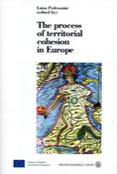strategic planning knowledge anthropology regulation ecological networks planning sociology mobility renaissance urban policies competition globalization local development tourism rural areas urban market public art collaborative urban design open spaces urban design conservation & preservation identity conferences composition social capital
The process of territorial cohesion in Europe
edited by Luisa Pedrazzini
The influence of the European Union's sectorial policies on European spatial configuration - just think of Common Agricultural Policy or Trans European Networks - is more and more considerable. The theme of the impact of the European Union (EU) policy on spatial structure has been growing for more than ten years. After the approval in 1999 of the European Spatial Development Perspective (ESDP) aiming to address the development of European space, the cohesion process was formally extended to territorial devolopment, so that in the European Constitution (2004) Territorial cohesion became a concurrent matter between EU and Member States and represents, along with those economic and social issues, the challenge and the target of the enlarged Union formed by a Community of 25 Members States. As a consequence, the influence of EU policy on Memebr States' and regions' daily planning practice is more and more substantial. For this reason, it is important to acquire a suitable knowledge of European context and policies which have connection with country planning.
This book answer to these expectations by collecting significant contributions presented during the course: The process of territorial cohesion in Europe, promoted by DIAP - Politecnico di Milano within the Jean Monnet European Module, an education project co-financed by the DG Education and Culture of the European Commission in the framework of the Jean Monnet Programme.
The book is structured in two parts: the first that gives the title to the book The process of territorial cohesion in Europe is dedicated to a close examination of the theoretical aspects and the current debate on territorial cohesion, while the second part Actor and policy tools investigates operational aspects on the application of the territorial cohesion concept throughout the EU programmes and projects.
CONTENTS
Preface, Alessandro Balducci
The process of territorial cohesion in Europe
• Applying the European Spatial Development Perspective: from spatial planning to territorial cohesion, Luisa Pedrazzini
• The uncertain future of EU territorial cohesion policy, Andreas Faludi
• The rationale for territorial cohesion: issues and possible policy strategies, Roberto Camagni
• Territorial cohesion in an enlarged Europe, Ivàn Tosics
• Does Europe really need another ESDP? And if yes, how should such an ESDP+ look like?, Klaus R. Kunzmann
• For a South-European and Italian perspective in the 'next ESDP', Giuseppe Dematteis and Umberto Janin Rivolin
• Italy and European spatial planning: ambiguous relationship?, Carlo Salone
Actors and policy tools
• Espon: current progress and results, Peter Mehlbye and Kai Böhme
• Modelling and spatial visions. Territorial dynamics and regional strategies for European cohesion, Carlo Lavalle, José I. Barredo, Niall McCormick, Marjo Kasanko
• Local development projects and the Italian experience of the Leader Community Initiative Programme. Paradoxes, uncertainties and results, Luciano Vettoretto
• The programme Interreg IIIB: a tool to apply the ESDP, Luisa Pedrazzini
• A complex interpretation of territorial cohesion, Cinzia Zincone
ABOUT THE EDITOR:
Luisa Pedrazzini, architect with specialization in planning. She is Jean Monnet professor at Politecnico di Milano Department of Architecture and Planning (DiAP), responsible for the European Module: The process of territorial cohesion in Europe. She is involved in many EU projects (Interreg IIIB, IIIC) and is project manager of a transnational project in the Interreg IIIB programme Alpine Space. At present she is manager of the office Plans, programmes and territorial projects of the Regione Lombardia. She was Contract professior at Politecnico di Milano in Urban planning (1991-2003).




Planum
The Journal of Urbanism
ISSN 1723-0993
owned by
Istituto Nazionale di Urbanistica
published by
Planum Association
ISSN 1723-0993 | Registered at Court of Rome 4/12/2001, num. 514/2001
Web site realized by ChannelWeb & Planum Association | Powered by BEdita 3

